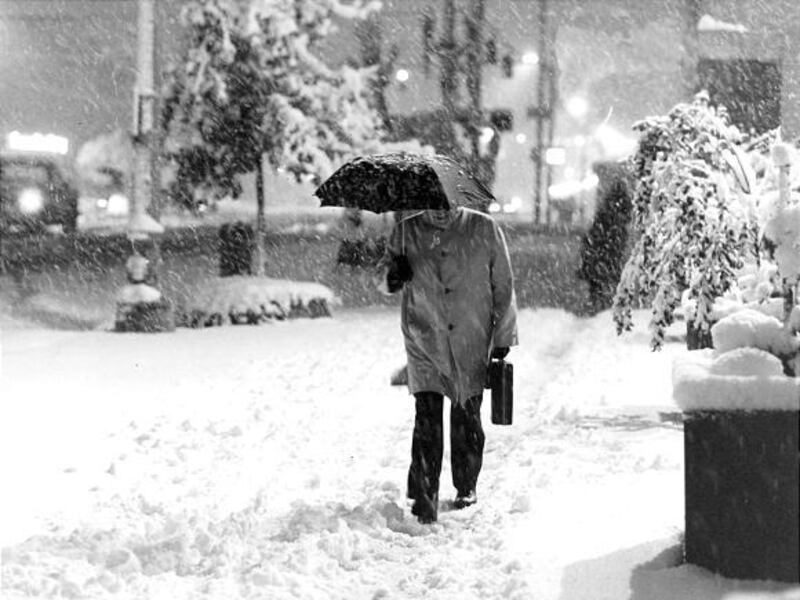SALT LAKE CITY — Anyone who lives in parts of a state that boast the "Greatest Snow on Earth" can expect winter storms that will bury their driveways and make the morning commute challenging.
Snow is part of life along the Wasatch Front, although some winters offer more challenges than others.
A storm in October 1984, for example, was recorded by the Los Angeles Times as the "greatest single storm on record at Salt Lake City, plastering up to 3 feet of snow across parts of Utah."
These singular meteorological events have earned a place in the minds of Utahns who found themselves digging out from under several feet of Utah's famous powder.
Among the individuals braving the icy roads on each occasion were photographers from the Deseret News who had been assigned to record the storm through pictures. Photo researcher Ron Fox has culled the newspaper archives for dozens of these images, which can be seen on the newspaper's Web site at deseretnews.com.
The unique geography of the Salt Lake area is responsible for the fine powder that draws skiers from all over the world. In fall of 1984, that combination was primed to power a storm with a remarkable punch.
The Great Salt Lake was full, the result of a wetter-than-average winter in 1983-84. William J. Alder, meteorologist in charge of the Salt Lake City office of the National Weather Service, described what happened to Deseret News staff reporter Twila Van Leer.
"Because the lake is at its highest level in 106 years, there was more surface from which the winds could glean," Alder said.
"The winds passed over the lake, hit the mountain, and the cooler air and the moisture condensed, contributing to the record snowfall that zapped the area," Van Leer wrote in a story in the Oct. 19, 1984, Deseret News.
The storm dumped record amounts of wet autumn snow with devastating results.
"The gigantic task of cleaning up after Thursday's devastating snow burial of the Salt Lake Valley was beginning to show results Friday, but the clearing away of broken trees will take months," Maxine Martz reported in the Oct. 19, 1984, Deseret News. The cleanup cost $500,000.
The official record was 18.6 inches of snow at Salt Lake City International Airport, the most measured since records began at the airport in 1928. Many parts of Salt Lake City received 3 feet or more of snow. Alder said the storm was a "one-in-50-year occurrence."
It seems to happen more often than that.
On March 26, 1983, the United Press International reported a winter storm in Utah that "triggered avalanches, knocked out power and snarled traffic. Up to 2 feet of snow blanketed Davis, Salt Lake and Utah counties. At least five avalanches in Big and Little Cottonwood Canyons closed roads and stranded skiers indefinitely."
The report noted that at least one skier, Kyle Bergman of Boulder, Colo., was unperturbed at being marooned at the ski resort.
"Hey, there's no panic atmosphere here as long as the beer holds out," Bergman said.
On Dec. 26, 1988, Martz wrote: "Only St. George didn't disappear under winter's onslaught Sunday, and it rained in that corner of the state. Elsewhere, from 2 inches to 2 feet of snow discouraged Christmas travel and made the coziness of a yule log that much more attractive."
A snow storm in 2003 even merits a mention in Wikipedia, which noted that the storm "affected the state of Utah from Dec. 25-31, 2003. Many areas of Utah were paralyzed by up to 4 feet of snow. … Overall, five people were killed in the storm."
Two of those storm-related deaths were in traffic accidents; the other three were snowboarders killed by an avalanche on the east side of Mount Timpanogos near Aspen Grove.
In February 2008, wind and snow combined to deliver a powerful punch to the communities in north Utah County, especially Eagle Mountain and Saratoga Springs.
e-mail: mhaddock@desnews.com










